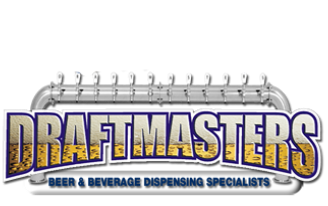
Camcarb is the leading supplier in compressed gases for use in the food packaging industry. Whether you are looking to package and process food, or to control storage environments for food preservations, Camcarb can supply you with the gases and the support you need.
It has been estimated that 25-40% of all fresh produce harvested will not reach the consumers table, due to spoilage and mishandling that occurs during distribution. To extend shelf-life, products like red meat, seafood, minimally processed fruits and vegetables, pasta, cheese, bakery goods, poultry, cooked and cured meats, ready meals and dried foods are packaged.
Food Packaging & Processing
Modified Atmospheric Packaging (MAP) is a proven method for extending shelf life without using chemical food preservatives. It is the shelf-life of perishable products like meat, fish, fruits and vegetables that will be prolonged with Modified Atmospheric Packaging since it slows the natural deterioration of the product. The modification process tries to lower the amount of oxygen, moving it from 20% to 0%, In order to slow down the growth of aerobic organisms and the speed of oxidation reactions. The removed oxygen can be replaced with a gas such as nitrogen prior to the vacuum sealing process, commonly acknowledged as an inert gas, or carbon dioxide, which can lower the PH or inhibit the growth of bacteria.
The mixture of gases in the package depends on the type of product, packaging materials and storage temperature. Re-balancing of gases inside the packaging can be achieved using active techniques such as gas flushing and compensated vacuum or passively by designing “breathable” films known as equilibrium modified atmosphere packaging (EMAP). Meat and fish need very low gas permeability films so for non-respiring products (meat, fish, cheese etc.) high barrier films are used. The initial flushed gas-mixture will be maintained inside the MA package. But fruits and vegetables are respiring products where the interaction of the packaging material with the product is important. If the permeability (for O2 and CO2) of the packaging film is adapted to the products respiration, an equilibrium modified atmosphere will establish In the package and the shelf-life of the product will increase.

There are two techniques used in the industry to pack vegetables namely gas-flushing and compensated vacuum. Gas-flushing is more widely used, and is a process where the package is flushed with a desired gas mixture, whereas in compensated vacuum the air is removed totally and the desired gas mixture then inserted.
Gases
The atmosphere in an Modified Atmospheric Packaging consists of N2, O2, CO2. It is the altered ratio of these gases that makes a difference in the prolongation of shelf life. By reducing the O2-level and increasing the CO2-level, ripening of fruits and vegetables can be delayed, respiration and ethylene production rates can be reduced, softening can be retarded and various compositional changes associated with ripening can be slowed down. Oxygen is essential when packaging fresh fruits and vegetables as they continue to respire after harvesting. The absence of O2 can lead to an acceleration of spoilage. When packaging meat and fish, the high CO2-levels are effective bacterial and fungal growth inhibitors. Nitrogen is used as a filler gas since it neither encourages or discourages bacterial growth. Almost every type of snack food can be packaged with nitrogen. These include potato chips, dried meat snacks, pre-cut fruits and vegetables, nuts, crackers, and cookies. The use of extremely dry nitrogen inside food packages eliminated moisture problems. Reduced oxygen content also diminishes oxidation and discoloration of food.
Food Preservation (Controlled Atmospheric Storage)
When fruits and vegetables are stored at their optimum temperature, their respiration rate is reduced. A nitrogen purge lowers the oxygen levels inside the storage facilities down to 2-5%, further reducing the fruit’s respiration rate. When apples are stored at their optimal temperature, they can last 2-3 months. But, by reducing the oxygen level inside the storage warehouse with nitrogen, these same apples can be stored for over a year. For many perishable fruits, particularly apples, bananas, pears, berries, and kiwis, the quality of freshness can be significantly prolonged by storage in refrigerated warehouses filled with a balanced atmosphere of nitrogen, oxygen, and carbon dioxide.
Welding Equipment Patio Heaters Services Superstore and Pick-Up Counter Delivery & Rush Services Rental Repair Hydrostatic Testing Centre
Propane, Refill, Recertification & Requalification Centre Safety Industries Locator Contact Us Legal Disclaimer Sitemap


